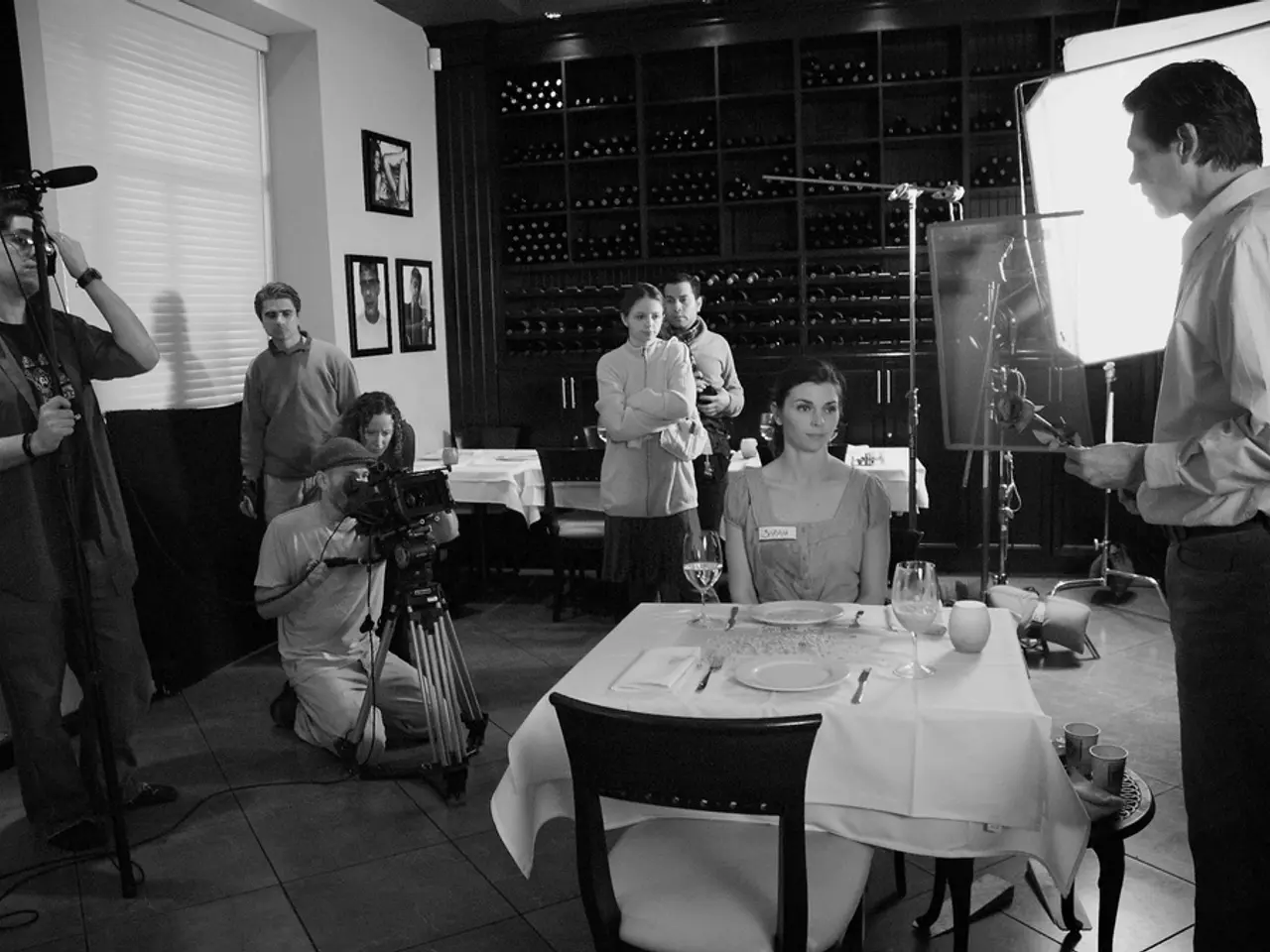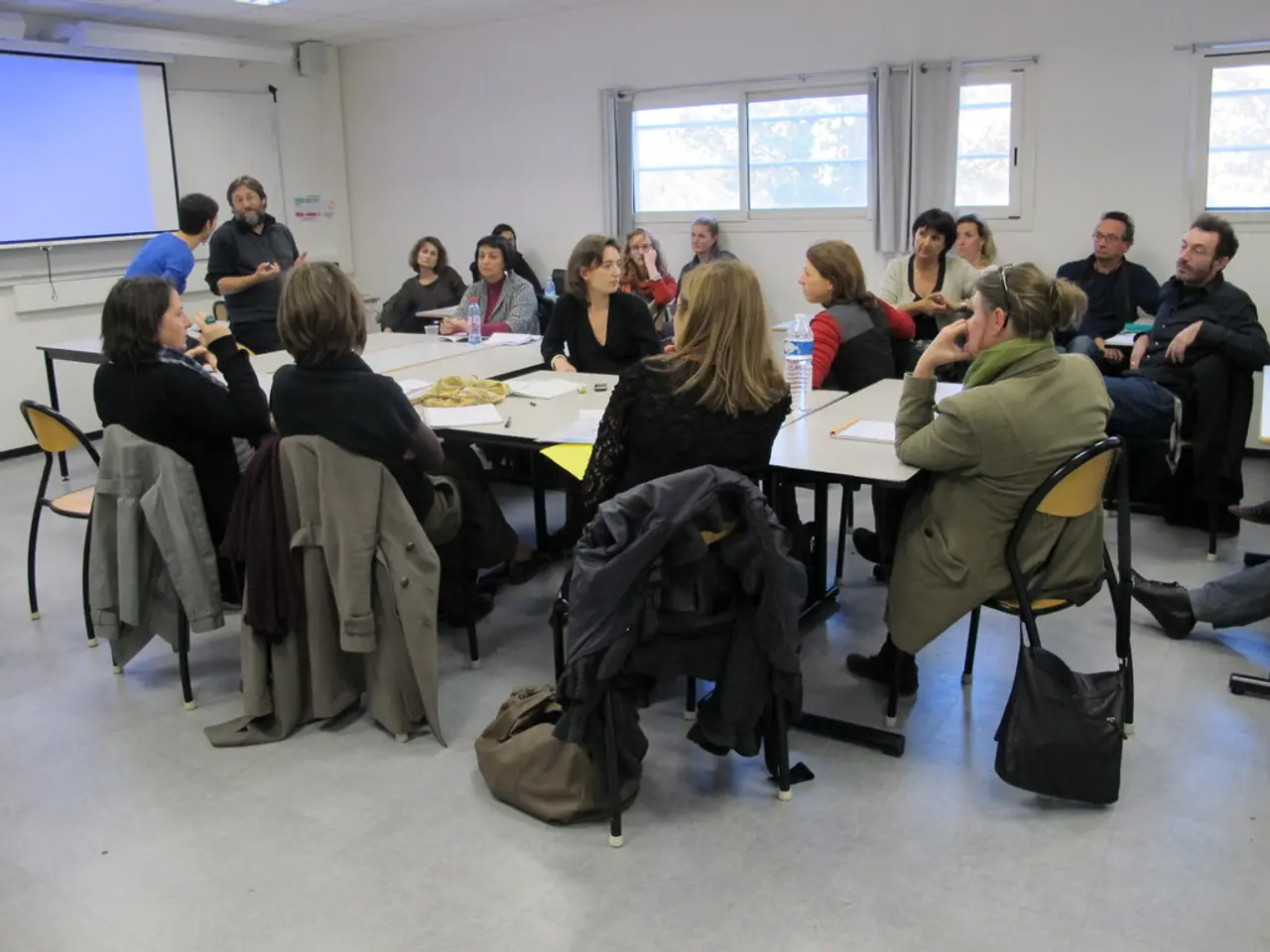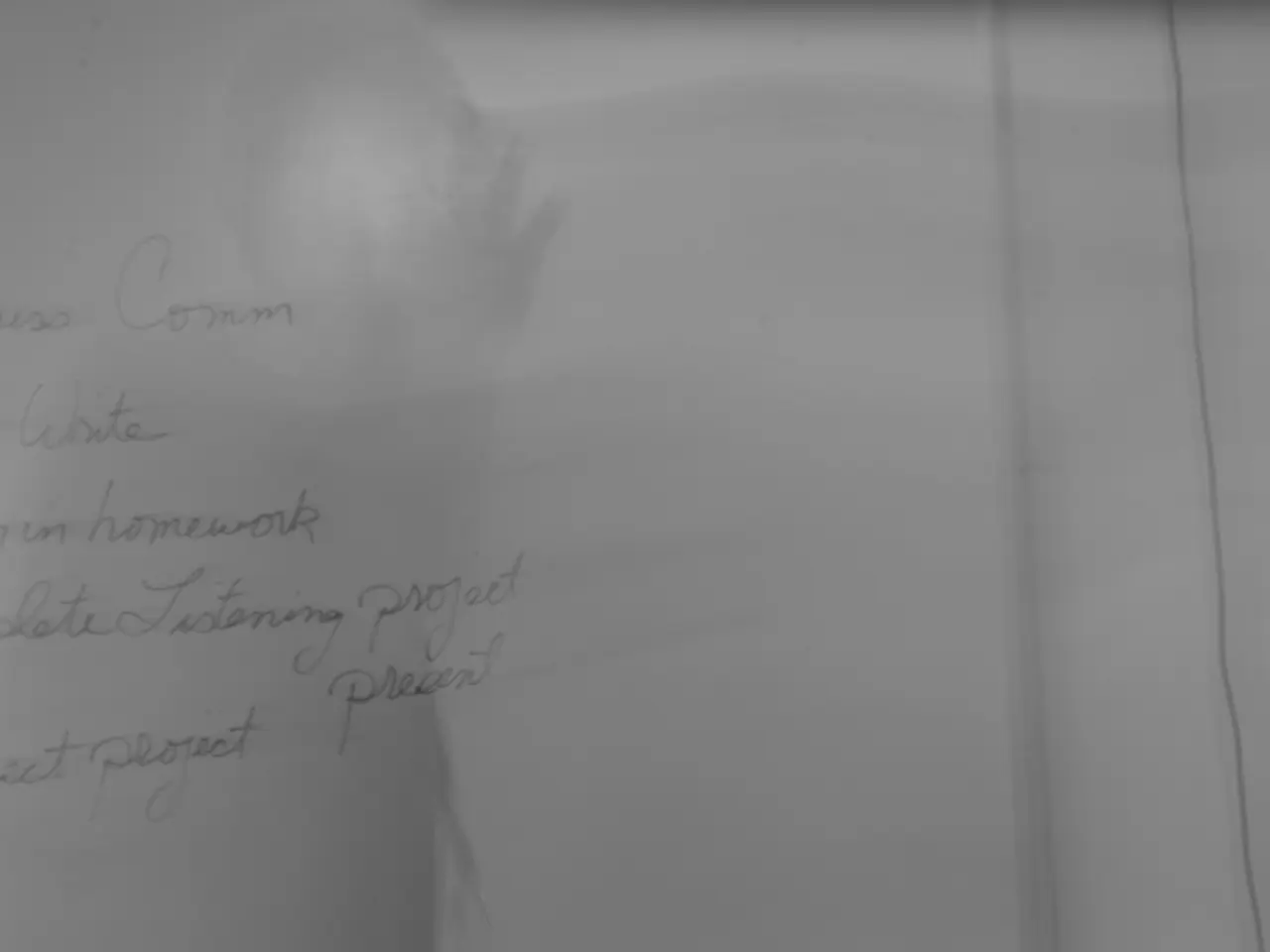Developing Trends in Movie Creation and Virtual Cinematography Approaches
In the world of cinema, the landscape is constantly evolving, and recent advancements have brought about a significant shift. At the forefront of these changes are real-time rendering engines, LED volume stages like StageCraft, advanced motion capture, and AI integration [1][2][3]. These technologies are merging live-action footage with computer-generated imagery (CGI) on set, allowing filmmakers to see near-final visual effects live during shooting [1][2][3].
One of the most profound impacts of these innovations is on the creative process. Directors and actors can now interact with immersive digital environments in real time, boosting creative experimentation, enhancing actor performance authenticity, and fostering collaborative flexibility during production [2][3]. Real-time visual feedback via LED walls, combined with motion capture, aids dynamic adjustment of lighting, camera angles, and backgrounds, enhancing visual storytelling and reducing the traditional divide between filming and VFX post-production [2].
Cost efficiency is another key benefit. Virtual production minimizes or eliminates extensive location shoots, reduces post-production compositing labor, and compresses production timelines through simultaneous filming and virtual set construction [1][4]. These savings make high-quality filmmaking accessible for a broader range of budgets, including indie productions, while large studios maintain spectacle-driven projects with better financial predictability [1][4].
Virtual production also has a positive impact on sustainability. By cutting down on physical set construction, travel, and resource consumption associated with on-location shoots, it reduces the environmental impact of the film industry [1][4]. The industry's growing adoption of virtual stages, such as Netflix's Dark Bay, highlights investment in infrastructure supporting greener production practices [1][4].
Moreover, AI and blockchain technologies are emerging to ensure financial and operational transparency, potentially fostering long-term sustainable filmmaking ecosystems by optimizing resource use and fair stakeholder revenue distribution [4].
In addition to visual advancements, spatial audio technology is being utilized for a more dynamic and realistic audio experience, particularly in VR settings [5]. Sound designers are creating immersive auditory experiences that blur the lines between reality and the virtual, while interactive sound elements are integrated, especially in virtual filmmaking and gaming [5].
Sustainable materials are being utilized for costumes and set design, and sustainable filmmaking is a guiding principle in production, with a focus on minimizing environmental impact [5]. Virtual sets are reducing the need for location shoots by creating dynamic, computer-generated environments, and hybrid soundscapes are being used, combining real-world recordings with synthetic audio [5]. LED lighting is being used as an energy-efficient lighting solution on set, and digital scripts and call sheets are being transitioned from paper to digital formats [5].
In summary, the advancements in virtual filmmaking are reshaping creativity, reducing costs, and promoting sustainability through integrated real-time technologies, AI, and digital workflows. These developments are critical to the modern and future film industry landscape [1][2][3][4][5].
- The real-time rendering engines, LED volume stages, advanced motion capture, and AI integration are causing a significant shift in the film industry, and are being used to merge live-action footage with computer-generated imagery on set for instant visual effects.
- These innovations improve the creative process by allowing directors and actors to interact with immersive digital environments in real time, leading to increased creativity, better actor performance, and enhanced collaborations during production.
- Real-time visual feedback via LED walls, in combination with motion capture, helps in dynamic adjustment of lighting, camera angles, and backgrounds, improving visual storytelling and bridging the gap between filming and VFX post-production.
- Virtual production offers cost efficiency by minimizing or eliminating location shoots, reducing post-production compositing labor, and compressing production timelines, making high-quality filmmaking accessible for various budgets.
- In addition to visual advancements, spatial audio technology is being used to create immersive auditory experiences, blurring the lines between reality and the virtual, while interactive sound elements are integrated, especially in virtual filmmaking and gaming.
- Sustainable materials are being utilized for costumes and set design, and the industry's focus is on minimizing environmental impact through practices such as reducing the need for location shoots by creating dynamic, computer-generated environments and using LED lighting as an energy-efficient solution.
- The growing adoption of AI and blockchain technologies in the film industry aims to ensure financial and operational transparency, leading to more sustainable filmmaking ecosystems optimized for resource use and fair stakeholder revenue distribution.




